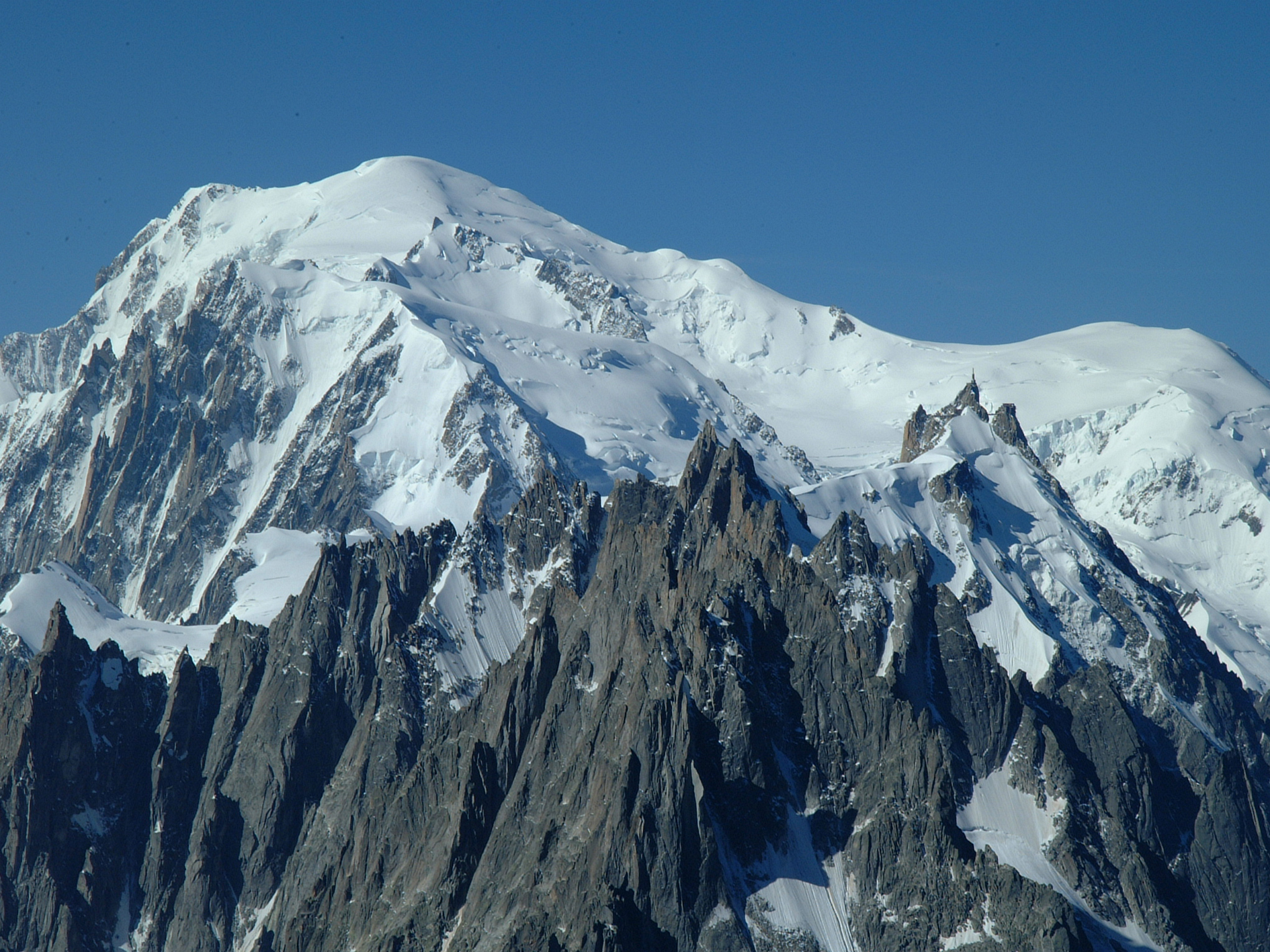Granite du Mont Blanc
Zurück zu Mt-Blanc-MassivDarstellung und Status
- Index
- gammaMB
- Farbe CMYK
- (0%,41%,59%,10%)
- Farbe RGB
- R: 230 G: 135 B: 95
- Rang
- lithostratigraphische Formation
- Gebrauch
- Element ist in Gebrauch
- Status
- informeller Begriff
- Diskussion des Status
Nomenklatur
- Deutsch
- Mont-Blanc-Granit
- Français
- Granite du Mont Blanc
- Italiano
- Granito del Monte Bianco
- English
- Mont-Blanc Granite
- Herkunft des Namens
- Historische Varianten
-
protogine (Jurine 1806), granits du Mont-Blanc (Guyot 1844), eigentlicher granitischer Centralkörper = Mont Blanc-Granit = Protogin (Gerlach 1871), Protogine à grands cristaux du Mont Blanc (Behmer 1912), Protogine de Monthey à quartz violet (Behmer 1912), Protogine du Mont-Blanc (Corbin & Oulianoff 1928, 1931, 1932), granit du Mont-Blanc, granite central du Mont Blanc, Granite du Mont Blanc (Marro 1986, Morard 1998), granito del Monte Bianco (Dal Piaz et al. 1992a), granite du mont Blanc (Drouet & Leloup 2015)
Beschreibung
- Beschreibung
-
faciès +/- porphyrique
Komponenten
- Biotit
- Kalifeldspat
- Quarz
Quartz gris vitreux, feldspath blanc et mica noir ou vert (biotite chloritisée).
Hierarchie und Abfolge
- Übergeordnete Einheit
- Untergrenze
-
Limite orientale primaire avec passage vers le haut à un leucogranite porphyre, puis à une rhyolite. Recouvert en discordance par la couverture sédimentaire mésozoïque. Limite occidentale tectonique (mylonitique).
Alter
- Alter Top
-
- Late Pennsylvanian
- Alter Basis
-
- Late Pennsylvanian
- Datierungsmethode
-
303 +/-3 Ma (U/Pb sur zircon ; Bussy et al. 1989), 304 +/-3 Ma (Bussy & von Raumer 1994), 303 +/-2 Ma (Bussy et al. 2000)
Geografie
- Typusregion
- Massif du Mont Blanc.
- Typlokalität
-
-
éperon au sud de la cabane du Trient (VS)
Merkmale des Ortes- typische Fazies
- Grat
- (2569460 / 1094065)
- Marro 1986 p.18, Burri & Marro 1993 p.7
-
éperon au sud de la cabane du Trient (VS)
- Referenzprofile
-
-
Plan de l'Aiguille (Chamonix, France)
Merkmale des Ortes- Untergrenze
- (2557150 / 1083230)
- Contact magmatique avec l'encaissant (Corbin et Oulianoff 1926b)
-
Plan de l'Aiguille (Chamonix, France)
Paläogeografie und Tektonik
-
- Variszische Plutonite des Helvetikums
- Paläogeografie
- Europäische Kontinentalplatte
- Tektonische Einheit (bzw. Überbegriff)
-
-
Mont Blanc
:
massif du Mont Blanc
-
Mont Blanc
:
- Herkunftstyp
-
- plutonisch
- Metamorphose
- monozyklisch
Referenzen
- Neubearbeitung
-
(2001) :
Mont-Blanc, Aiguilles-Rouges massifs (External Massifs) - an example of polyorogenic evolution. Fieldtrip Guide 1, 53-84, Univ. Lausanne
p.68: The 303 Ma magmatic pulse It is represented by the voluminous 303 ± 2 Ma Mont-Blanc granite, located in the Mont-Blanc massif. It is a foliated, porphyritic monzo- to syenogranite with K-feldspar megacrysts and Ferich biotite as the only mafic mineral (Marro 1988; Bussy 1990). It hosts numerous mafic microgranular enclaves, calc-alkaline micromonzodioritic stocks and synplutonic dykes of mantellic origin, which record magma mingling processes (Bussy 1990). The Mont-Blanc granite is a metaluminous, ferro-potassic, alkali-calcic intrusion characterized by high K, Y, Zr contents and Fe/Mg ratios, and a low 87Sr/86Sr initial isotopic ratio of 0.705 (Bussy et al. 1989). Zircon morphology shows an extreme typology with very high A and T indices, typical of alkaline granites. The Mont Blanc granite is the last magmatic event recorded in the area, apart from ash-fall deposits embedded at different levels of the Salvan Dorénaz basin, which testify a 295 +3/-4 Ma old episode of high-explosive volcanism from distant volcanic centers, possibly located in the Aar-Gotthard massifs (Central Alps).
- Wichtige Publikationen
-
(1986) : Les granitoïdes du Mont Blanc en Suisse. Thèse de doctorat, Université de Fribourg, 145 pages
-
Faciès (central) porphyrique du Granite du Mont-Blanc
- Name Origin
-
Faciès porphyrique développé au coeur du massif intrusif.
- Rang
- petrographische Fazies
- Status
- informeller Begriff
- Kurzbeschreibung
-
Granite porphyrique à biotite et mégacristaux de feldspath potassique (max. 5-6 cm).
-
Faciès (de bordure) équigranulaire du Granite du Mont-Blanc
- Name Origin
-
Faciès équigranulaire développé à la bordure de l'intrusion là où les contacts magmatiques n'ont pas été tronqués par la tectonique.
- Rang
- petrographische Fazies
- Status
- informeller Begriff
- Kurzbeschreibung
-
Granite équigranulaire à biotite. Le taille des minéraux est de l'ordre de 0,5 à 1 cm, sans mégacristaux.

